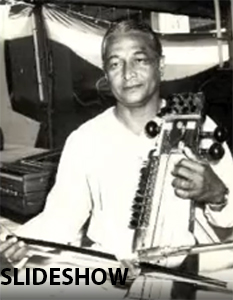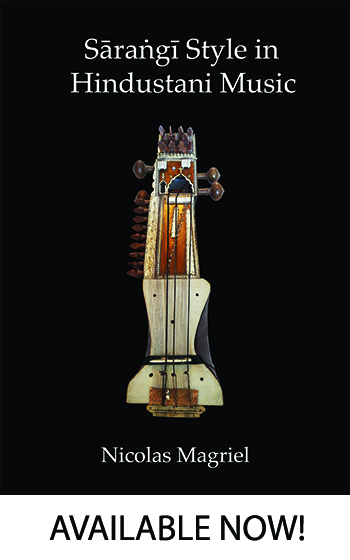
I first met Inder Lal Dhandra in 1971. He was, in the the 70s, one of the few sarangi players with the AIR "Top Class" ranking. Pandit Ram Narayan learnt for some time from relative and teacher Uday Lal in Udaipur, so there is a discernable similarity in their styles. There is a strong dhrupad influence in Inder Lal's alap—which he attributes to playing with dhrupad when he was young. Dhrupad was the main music in temples in Udaipur in those days, and the Dagar brothers also spent some time in the Maharaja's palace, so he had many opportunities to accompany them. While serving in another maharaja's court near Simla, he also learned from the great vocalist Dilip Chandra Vedi.
I visited Inder Lal in West Delhi in April 1997. I was impressed by his relaxed leisurely style of tuning and discussing music and life. His sarangi's tone was extraordinary. He is said to have cultivated a special skill for filing the ankhe, table bridges, of the sarangi—achieving maximum resonance. Other sarangi players including Ram Narayan used to bring their instruments to him for this work. Inder Lal says that he taught Bharat Bushan Goswami when they were simultaneously employed as staff artists at All India Radio, Delhi. I played sarangi for him in the middle of our interview (not recorded), and he was very apprciative. Just as I was going out the door, after the camera was turned off he surprised me by switching into cantankerous mode and declaring "ve mussalman log hamare shastriya sangit karab kar diya" (those Muslims have ruined our classical music).
We begin with a video of our conversation:
Next is a beautiful alap in rag Asavari:
Followed by thumri-style Bhairavi:
And then more discussion:


